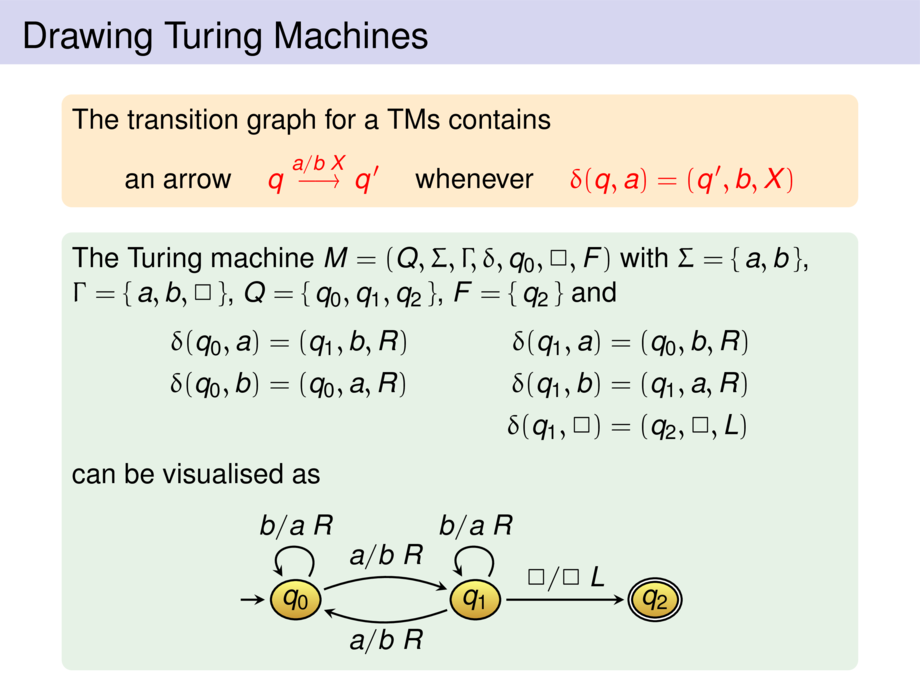



































































































25/85
\begin{frame}
\frametitle{Drawing Turing Machines}
\begin{goal}{}
The transition graph for a TMs contains
\begin{talign}
\text{an arrow \quad \alert{$q \stackrel{a/b\text{ }X}{\longrightarrow} q'$} \quad}
\text{whenever \quad \alert{$\delta(q,a) = (q',b,X)$}}
\end{talign}
\end{goal}
\begin{exampleblock}{}
The Turing machine $M = (Q,\Sigma,\Gamma,\delta,q_0,\Box,F)$ with
$\Sigma = \{\, a,b \,\}$,
$\Gamma = \{\, a,b,\Box \,\}$,
$Q = \{\, q_0,q_1,q_2 \,\}$,
$F = \{\, q_2 \,\}$ and
\begin{talign}
\delta(q_0,a) &= (q_1,b,R) &
\delta(q_1,a) &= (q_0,b,R)
\\
\delta(q_0,b) &= (q_0,a,R) &
\delta(q_1,b) &= (q_1,a,R)
\\
&&
\delta(q_1,\Box) &= (q_2,\Box,L)
\end{talign}
can be visualised as
\begin{center}
\begin{tikzpicture}[default,node distance=25mm,->,s/.style={minimum size=5mm}]
\node (q0) [state,s] {$q_0$}; \draw ($(q0) + (-8mm,0mm)$) -- (q0);
\node (q1) [state,s,right of=q0] {$q_1$};
\node (q2) [fstate,s,right of=q1] {$q_2$};
\draw (q0) to[bend left=20] node [label,above] {$a/b$ $R$} (q1);
\draw (q0) to[tloop] node [label,above] {$b/a$ $R$} (q0);
\draw (q1) to[bend left=20] node [label,below] {$a/b$ $R$} (q0);
\draw (q1) to[tloop] node [label,above] {$b/a$ $R$} (q1);
\draw (q1) to node [label,above] {$\Box/\Box$ $L$} (q2);
\end{tikzpicture}
\end{center}
\end{exampleblock}
\end{frame}

